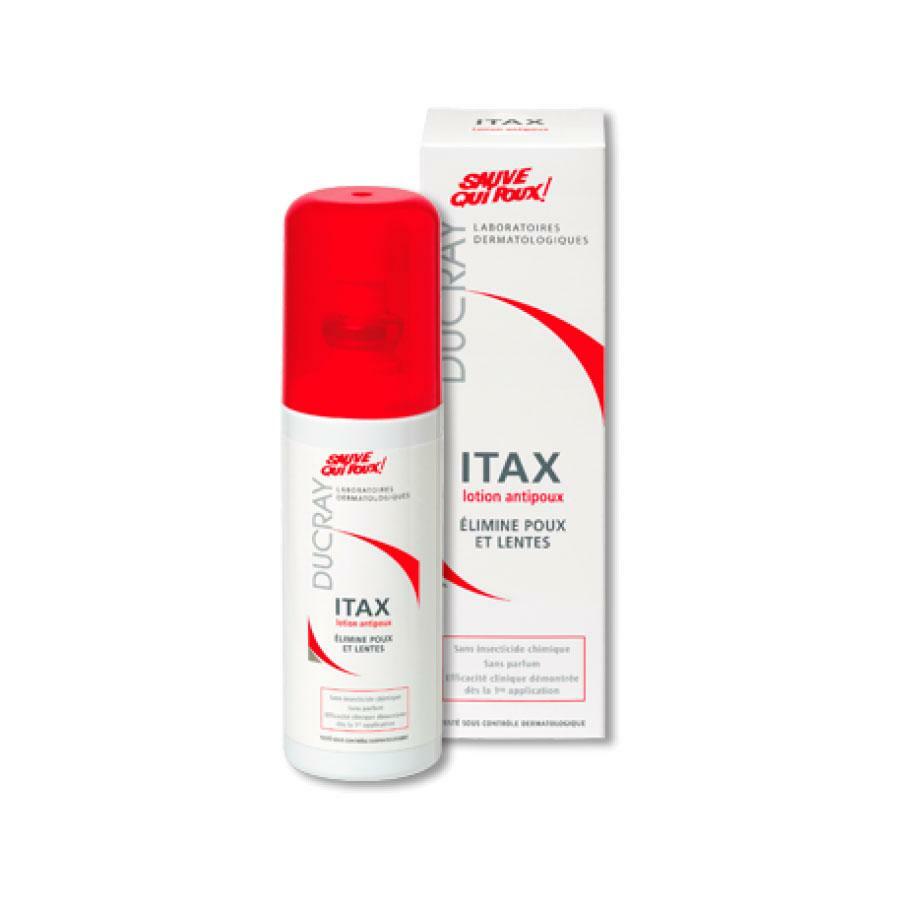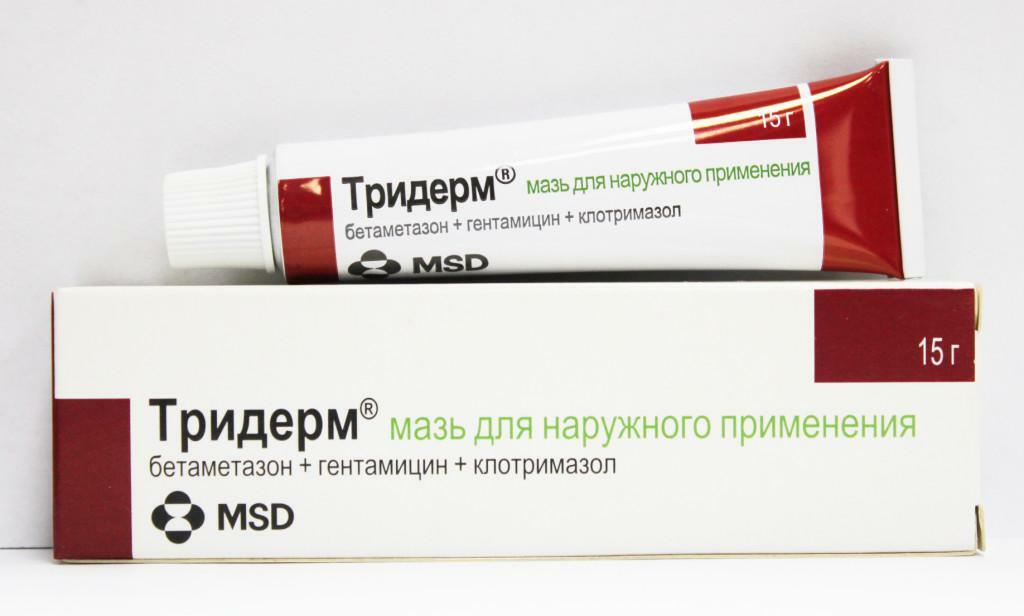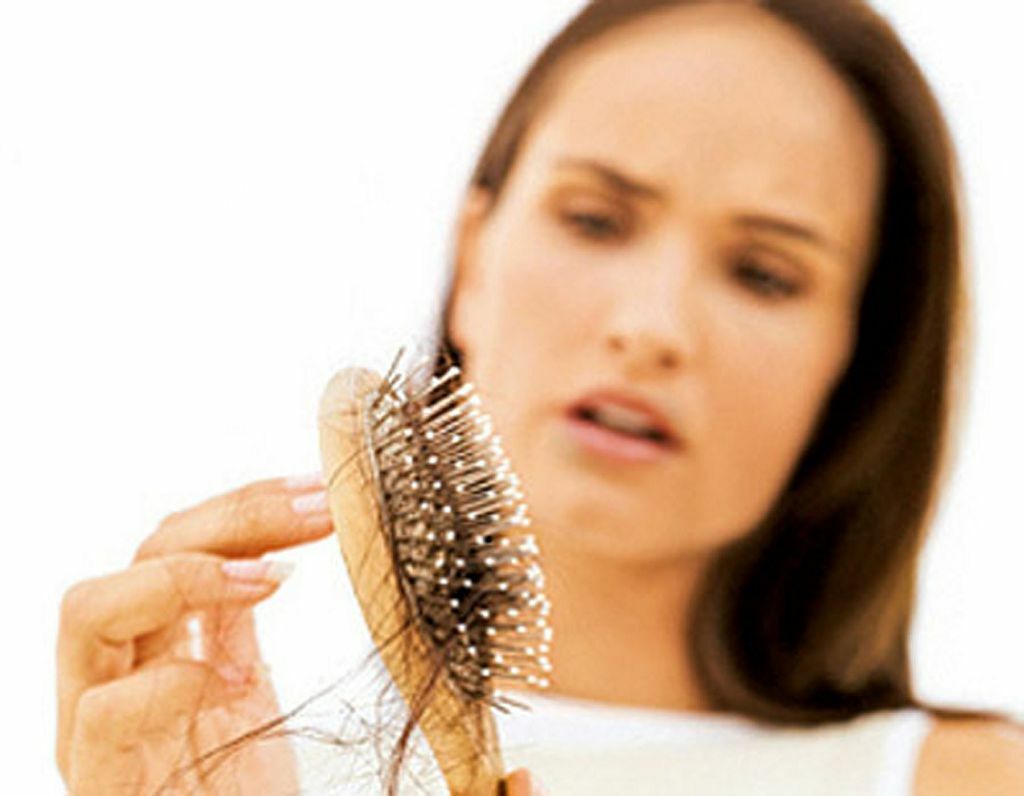Skin is an outer covering of the human body with an area of about 1.6 m2, which performs several important tasks: mechanical protection of tissues and organs, tactile sensitivity( touch), thermoregulation, gas exchange and metabolism, protection of the body against microbial penetration.
But sometimes the skin itself is the target of an attack of microorganisms - then dermatological diseases develop, among which is erysipelas.
Contents
- 1 Erysipelas( face) - what is it?
- 2 reasons erysipelatous toe inflammation
- 3 Symptoms of erysipelas legs photo
- 3.1 Diagnostics faces
- 4 forms of erysipelas feet
- 5 Treatment of erysipelas feet
- 6 Complications erysipelas
- 7 forecast
- 8 Prevention erysipelas
- 9 Erysipelas ICD 10
Erysipelas( erysipelas) - thatis this?
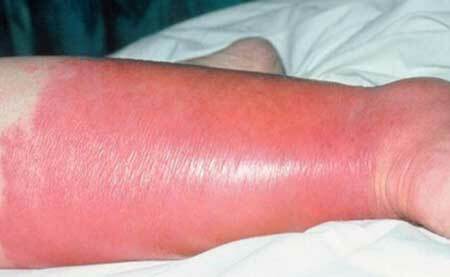
Erysipelas, photo 1
Erysipelas is an acute diffuse inflammation of the skin( less often mucous membranes) of an infectious origin, usually affecting the face or lower leg.
Erysipelas causes beta-hemolytic streptococcus of the group when it penetrates the skin through small abrasions, cuts, insect bites, scrapes, and rubs.
erysipelas are more common in men of working age and in women over 45 years of age. For children under the age of one year, it poses a mortal danger( photo 3).
The prevalence of the disease is great - the fourth place after ARI, GI and hepatitis infections.
Beta-hemolytic streptococcus of group A
The β-hemolytic streptococcus of group A( BGSA) itself was discovered relatively recently( 150 years ago), but with the diseases it causes, mankind has been familiar with it for a long time.
Angina, pharyngitis, laryngitis, scarlet fever, rheumatism, severe damage to kidney tissue - far from a complete list of pathological conditions caused by BHSA.The Ministry of Health states: the damage to the economy from β-hemolytic streptococcus is 10 times higher than the damage from all viral hepatitis.
It belongs to a conditionally pathogenic microflora, because it is present practically in all people in the oral cavity, respiratory tract, on the skin and external genital organs. Good immunity limits his virulence( degree of contagiousness).
BGSA very quickly spreads through the air, through the digestive tract and objects, so it usually shows up in rooms where children's and work collectives are for a long time, 57.6% of angina and 30.3% of ARI are caused by it.
Streptococci survive freezing and heating to 70 ° for 2 hours, in the dried biomaterial( blood, pus) they retain high infectiousness for several months. Toxins cause severe heart and kidney disease.
For children, the carrier of the pathogen in the upper respiratory tract is more typical. When examining schoolchildren BGA is allocated in the nasopharynx 20-25% of children.
Causes of erysipelas of feet
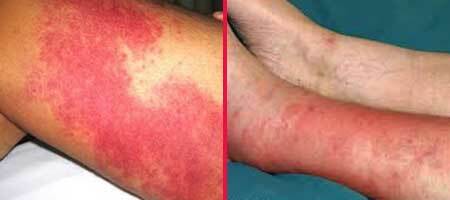
Manifestations of erysipelas, photo 2
The cause of erysipelas can be small ulcers, boils and carbuncles, purulent wounds. Frequent hypothermia of the feet or excessive inflammation that cause microtraumas of the skin can contribute to the spread of dangerous streptococci in the skin.
Erysipelas on the foot is very often a consequence of other serious diseases:
- of diabetes mellitus;
- varicose veins;
- thrombophlebitis;
- trophic ulcers;
- fungal infection;
- alcoholism;
- obesity.
Stressful situations, sharply reducing immunity, can give an impetus to the attack of streptococcus on its carrier.
Chronic foci of infection in the form of destroyed teeth, enlarged tonsils in 5-6 times increase the risk of erysipelas on any part of the body.
Symptoms of erysipelatous legs, photo
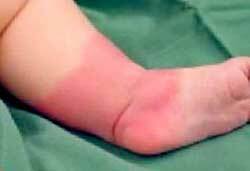
Irritating in children, photo 3
After a week( on average), after introduction into the skin of the pathogen, an acute onset of the disease occurs.
Sudden signs of intoxication appear:
- severe weakness,
- temperature to 40 ° C with chills,
- painful headache,
- aches in bones and muscles,
- sometimes - nausea and vomiting.
During the day, there are symptoms of erysipelas on the shins: the affected area dries up sharply, glosses from tension and turns red. The name "mug" also occurs as a derivative of the word "red" in some European languages.
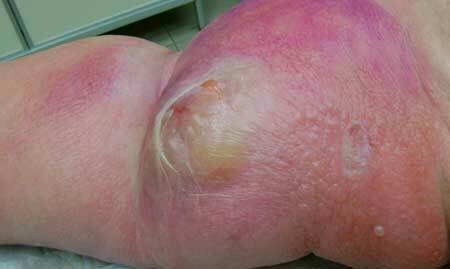
photo 4

photo 5
The inflamed area is delimited from the healthy skin by a demarcation roller. Its uneven, scalloped outlines along the perimeter of the lesion are characteristic. Expressed redness of the skin is caused by hemolysis - the process of destruction of red blood cells( erythrocytes) by streptococcus.
When you press your finger, the redness disappears for a few seconds. The lesion is warmer to the touch than the surrounding tissue.
Pain and burning cause severe suffering to the patient. Inflamed popliteal and inguinal lymph nodes. In the direction to them from the lesion zone under the skin, dense reddish stripes are visible - lymphatic vessels, lymphangitis develops.
Diagnosis of erysipelatous
Often, the diagnosis is made without tests on the totality of general and local symptoms.
In other diseases, local symptoms often appear first, and only after them is intoxication manifested.
Laboratory tests can confirm the presence of β-hemolytic streptococcus.
Forms of erysipelas of foot
Based on the nature of local changes, the following are distinguished:
1. The erythematous form of - the site has a bright uniform coloration and clear boundaries.
2. The erythematous hemorrhagic form - on the affected area, against the background of general reddening( erythema), there are multiple point hemorrhages - a sign of the defeat of the blood capillaries.
3. The erythematous-bullous ( bulla, Latin - bubble) form - with it on the third day, the upper layers of the skin are stratified with the formation of bubbles.
The liquid in them contains a large mass of streptococci with a high degree of virulence, therefore, when the blisters are opened, antiseptic treatment must be carefully performed. Healed with the formation of a crust, under which is formed a smooth skin.
4. Bull-hemorrhagic form - in the blisters is an opaque bloody liquid.
5. Gangrenous form with areas of skin necrosis.
The wandering form is allocated, when for several days the lesion is displaced to a neighboring site, and the primary focus is scaly and heals.
This form is typical for newborn children, with the rapid proliferation of erysipelas, children can die.
The severity of the disease is different:
- is an easy form( the lesion is small, the temperature is not higher than 38.5 ° C), the
- is mild( several small lesions, the temperature is up to 40 ° C for not more than 5 days)
- severe form when bullous-hemorrhagicelements cover almost the entire body, the temperature is critical for several days, loss of consciousness, delirium and signs of meningitis.
The inflamed area of the skin remains and after healing is sensitive to streptococcal infection, which gives grounds for the diagnosis of "repeated" and "relapsing" erysipelas.
Treatment of erysipelatous foot inflammation
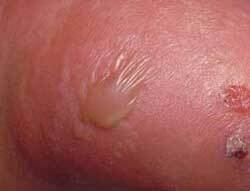
Treatment of erysipelatous foot inflammation
Light forms of erysipelas can be treated on an outpatient basis. Severe and neglected cases require hospital treatment.
1) The first and main purpose is antibiotics in the form of intramuscular injections or orally. Penicillin antibiotics have remained effective in the fight against hemolytic streptococcus.
They are combined with the administration of oleandomycin, furazolidone, erythromycin for one to two weeks.
2) Their action is enhanced by sulfanilamide preparations( biseptol).
3) Vitamins and biostimulants( levamisole, pentoxyl, methyluracil) are mandatory for restoration of immunity and fastest healing of the focus.
4) Anti-inflammatory and antipyretic agents are prescribed as non-steroid agents: aspirin, diclofenac, ibuprofen, baralgin, reopyrin.
5) In case of severe intoxication, a glucose solution or reopyrin is repeatedly administered.
6) For the removal of intoxication, abundant drinking and diuretics are prescribed.
7) Physiotherapeutic procedures:
- ultraviolet irradiation in the acute period has a bacteriostatic effect;
- Lidase Electrophoresis,
- Ozokerite,
- Magnetotherapy.
The last three procedures improve lymph flow, preventing the development of elephantiasis.

Surgical treatment of erysipelas, photo 7
8) Sensitization of the body prevents the administration of antihistamines.
9) Sclerotherapy - the introduction of a substance into the veins that causes constriction and resorption of the vessel - promotes rapid healing of blisters and healing of the inflamed skin area.
10) Endovasal laser coagulation - leads to the disappearance of lumen in diseased veins, preventing the development of lymphostasis.
11) Surgical treatment of the lesion:
- opening of blisters, treatment with furicillin solution, enterosepthol in powder form, erythromycin ointment;
- excision of inflamed veins and necrotic areas.
12) In severe cases, a blood or plasma transfusion is performed.
Treatment of erysipelatous foot inflammation is performed by a doctor. To avoid complications, the patient must strictly perform all medical appointments, even with outpatient treatment.
When treating erysipelas at home it is important to know:
1) You can not tightly bandage the affected area, only light bandages that are changed several times after antiseptic treatment of the skin are allowed.
2) You can not use ichthyol ointment and Vishnevsky balsam - they increase the inflow of interstitial fluid and slow the healing process;
excessive softening of the skin with ointments will lead to additional infection of the wound.
3) After opening the bubbles, it is possible to treat erosion with hydrogen peroxide and put the skin under them with a powder, which includes
- boric acid( 3 g),
- xerobes( 12 g),
- streptocide( 8 g).
Top over the wound surface with a two-layer gauze.
Complications of erysipelatous inflammation
Erysipelas can pass on its own: two weeks after the onset of the disease redness decreases, but swelling and skin pigmentation remains for a long time. The probability of a repeat process is great.
With insufficiently active treatment, erysipelas causes common and local complications. It is especially dangerous for patients with diabetes mellitus, allergies, varicose veins and thrombophlebitis, with heart failure and HIV infection.
There is a danger of developing pneumonia, sepsis and meningitis.
Streptococcus toxins cause rheumatism, myocarditis and glomerulonephritis.
Local complications are phlegmon and abscesses, trophic ulcers and lymphostasis( elephantiasis), in which the volume of limb tissues sharply increases due to accumulation of interstitial fluid and thickening of the skin.
Elephancy develops in 15% of all cases of erysipelas. It is accompanied by such phenomena as papillomas, eczema, lymphorrhoea( effusion of lymph from thickened pigmented skin).All this greatly complicates the life of the patient.
Forecast
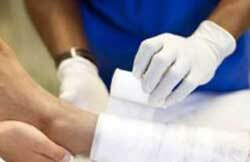 The prognosis after erysipelas on the legs depends on the severity of the disease and the body's immunity.
The prognosis after erysipelas on the legs depends on the severity of the disease and the body's immunity.
Recurrent forms often develop with the addition of the staphylococcal flora to the BGSA.
Due to acquired lymphostasis, disability can be reduced.
In general, the prognosis is favorable for the patient's life if complications were avoided.
Prevention of erysipelatous inflammation
No specific prophylaxis. To prevent erysipelas, certain general and local measures must be followed.
General:
- limit contact with sick erysipelas, after contact, perform antiseptic treatment of their skin;
- to take care of strengthening immunity by adjusting the regime of the day, exercise, avoidance of stressful situations;
- in time to eliminate the foci of chronic streptococcal infection, monitor the health status;
- to establish the proper healthy diet - hemolytic streptococcus rapidly multiplies in stale food, giving special preference to meat broths;
- in order to avoid recurrences after the transferred erysipelas to conduct preventive injections of bicillin all the year round.
Local measures:
- pay more attention to their feet - regularly wash them, avoid calluses and rubs, small cuts, overcooling and overheating;
- monitor the condition of the venous system and consult a specialist in time.
erysipelas of microbes 10
In the International Classification of Diseases of the ICD, 10 erysipelas is:
Class I
- A30 - A49 Other bacterial diseases
- A46 Erysipelas( Erysipelas)

